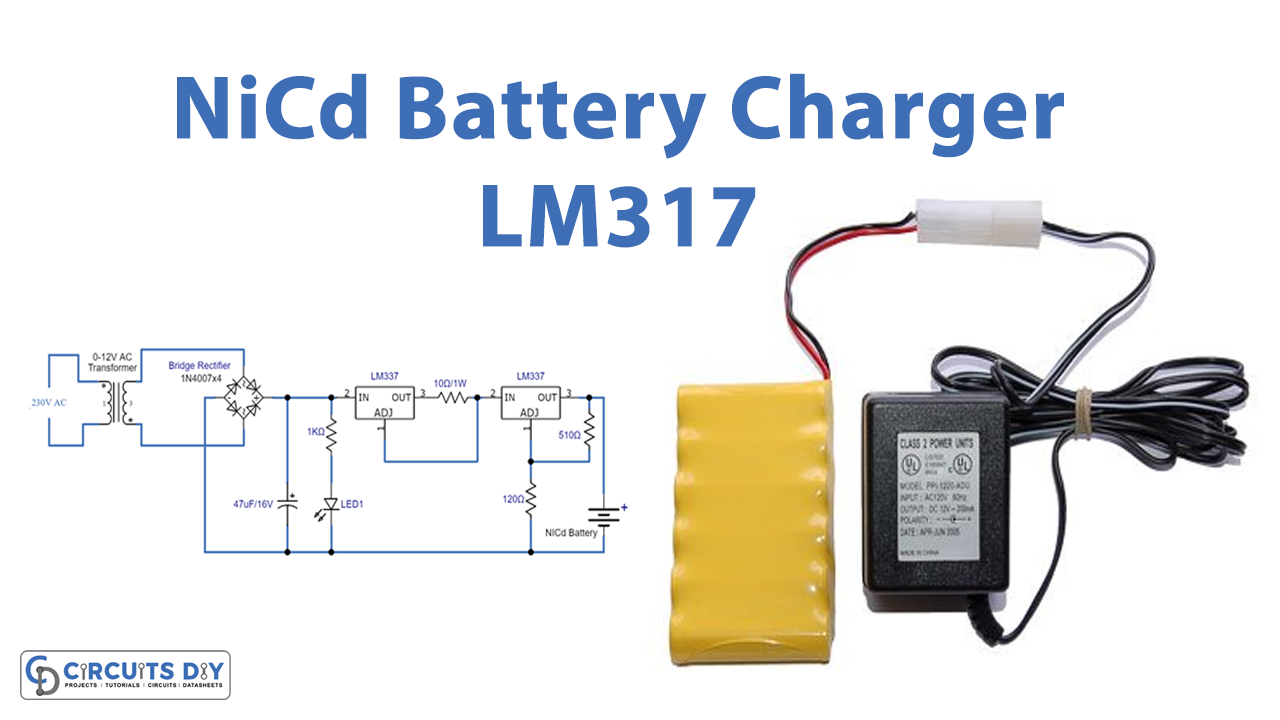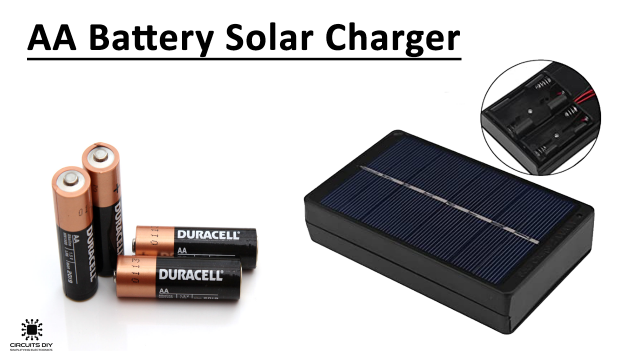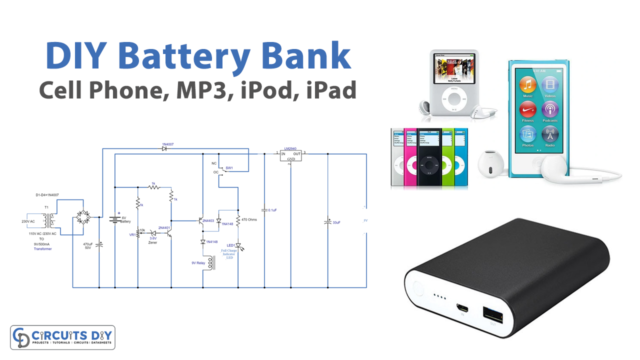Introduction
Suppose you’re at work using your laptop and suddenly got a pop-up that your battery is quieting down. What would you do? Or assume you are playing a game when you realize that only 15% charging is remaining. What would you do? You quickly run to grab the charger. So we can say that your gadgets are nothing without their chargers. In other words, you can also say that Batteries are of no use if we don’t have a charger with them. Thus the charger circuits depend on the battery type. Different electronic devices use different batteries for their circuits. For example, considering the nickel-cadmium battery, the charger circuit employed might not be adopted by some others. So we have decided that in this tutorial, we are going to make a “NiCd Battery Charger Circuit”
An Overview of NiCd Battery
Nickel-cadmium (NiCd) battery has nickel oxide inside as the active material for its positive electrode and cadmium metal and cadmium oxide at its negative side. This battery is rechargeable and below we have given its charging circuit details. We usually use the battery in portable devices like mobile phones, laptops, and other compact gadgets.
Hardware Required
| S.no | Component | Value | Qty |
|---|---|---|---|
| 1. | Step Down Transformer | 0-12V AC | 1 |
| 2. | Diode | 1N4007 | 4 |
| 3. | Regulator IC | LM317 | 2 |
| 4. | LED | – | 1 |
| 5. | Capacitor | 47µ/16V | 1,1 |
| 6. | Resistors | 1KΩ, 120Ω, 510Ω, 10Ω/1W | 1, 1, 1, 1 |
| 7. | 2-Pin Connector | – | 1 |
Circuit Diagram

Working Explanation
This NiCd Battery Charger Circuit first uses the transformer that steps down AC voltage from 230V to 12V. After that, it needs a bridge rectifier circuit to convert that Ac voltage to the DC voltage. After the rectifier circuit, it may have ripples in it, the capacitor in the circuit would remove that. Then there is LM317 IC which provides the constant current regulation. If you see the circuit diagram, you can observe that the second IC is the same and take the input from an adjutant pin of the first IC. This Second IC provides the regulated output voltage which voltage would depend on the values of resistors R3 and R4. By changing the values of that resistance, you can change the output voltage.
Application and Uses
The circuit is for the NiCd Battery and can be utilized everywhere where this battery may get used. For example,
- Laptops
- Mobile phones
- Small portable battery-operated devices, etc.







